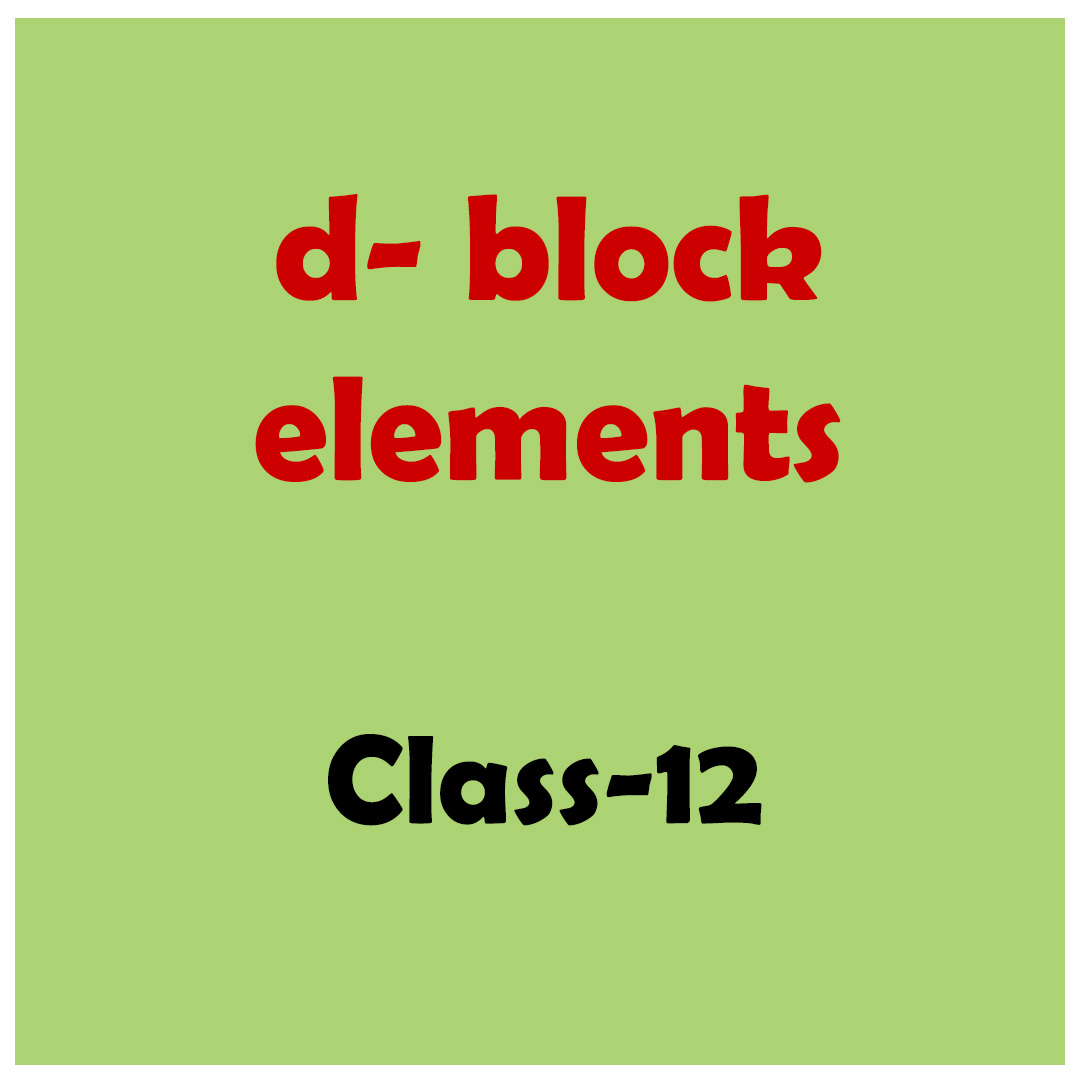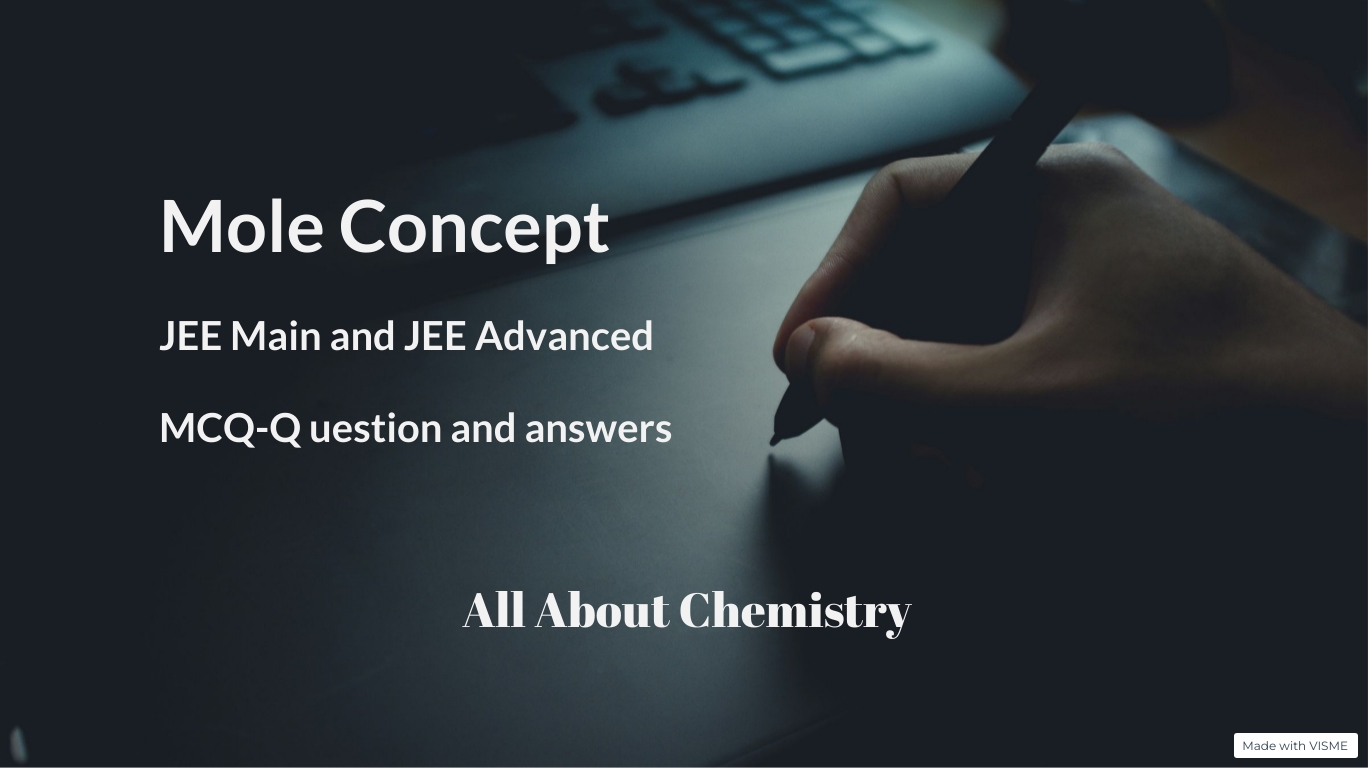General Electronic Configuration of d-block elements.
| 3 | 4 | 5 | 6 | 7 | 8 | 9 | 10 | 11 | 12 | |
| 3d | Sc | Ti | V | Cr | Mn | Fe | Co | Ni | Cu | Zn |
| 4d | Y | Zr | Nb | Mo | Tc | Ru | Rh | Pd | Ag | Cd |
| 5d | La | Hf | Ta | W | Re | Os | Ir | Pt | Au | Hg |
| 6d | Ac | Rf | Db | Sg | Bh | Hs | Mt | Ds | Rg | Cn |
Question and Answers
What is the general electronic configuration of d-block elements?
(n-1)d1-10 ns1-2
What is meant by transition metal?
Transition metal is an element which has incompletely filled d-orbital in the ground state or in any of its excited states.
Why the enthalpies of atomisation of the transition metals are high?
Transition metals have strong metallic bonds between the atoms. Thus, high amount of heat is required to break the metal lattice to give free ions.
Why the atomic radius of the d-block elements, in the beginning, decreases with an increase in the atomic number from left to right?
With the increase in the atomic number, the nuclear charge increases which in turn increasingly tends to attract the electron cloud inward resulting in a decrease in size.
Why the atomic radii for the elements from Cr to Cu are very close to one another?
This is due to the fact that simultaneous addition of electron to 3-d orbitals exercise the reverse effect by screening the outer 4s-orbital electrons from the inwards pull of the nucleus. As a result of these two opposing effects, the atomic radii do not differ much on moving from Cr to Cu.
Why there is a slight increase in the atomic radii at the end of the period?
It is due to increased electron-electron repulsions on addition of electron in the same orbital with respect to the increased attractive force due to nuclear charge. This causes the expansion of the electron cloud and the atomic radius increase.
Why the atomic radii of the elements of the second and third transition metals are almost the same?
Due to lanthanide contraction.
Why transition elements are generally hard?
The electronic configuration of the transition elements shows that they have one or more unpaired electrons present in either ns or (n-1)d-orbitals which are available for formation of bond. Greater the number of such available electrons, more will be the chances of their mutual combination and more will be the strength of the metallic bond. Thats why these metals are very hard.
Why Cr, Mn and W are very hard but Zn, Cd and Hg are not hard?
Cr, Mn and W have maximum number of unpaired electrons in their orbitals, thus the metallic bonds in these elements are strong and very hard.
Zn, Cd and Hg have completely filled orbitals. The metallic bonds are quite weak in them and these are comparatively soft.
Why the transition elements have quite high densities?
In d-block elements, the inner (n-1)d orbitals are filled, this leads to increase in nuclear pull resulting in decrease in volume. As the volume decreases, density of these elements becomes high.
In a given series, why the difference in the ionization enthalpies between any two successive d-block elements is very less than the difference in the case of successive s-block or p-block elements?
The addition of d electrons in the penultimate shell with increase in atomic number provides a screening effect and thus shields the outer s electrons from inward nuclear pull. Thus, the effects of increased nuclear charge and addition of d electrons tend to oppose each other. This is due to these opposite effects that the ionisation enthalpies show a slight variation.
Why the first ionisation enthalpy of Zn, Cd and Hg are very high?
Because of the fully filled (n-1)d 10 ns2 configuration.
Why there is a fall in 2nd ionization enthalpy from Cr to Mn and from Cu to Zn?
After the removal of the first electron, Cr and Cu acquire a stable d5 and d10 configuration. Thus the removal of another electron from Cr+ and Cu+ becomes difficult.IE2 : Cr > Mn and Cu > Zn
Why the third IE of Mn is very high?
Because the 3rd electron has to be removed from the stable half-filled 3d orbital.
Why the 3rd IE of Fe is less than that of Mn?
The electronic configuration of Fe2+ is 3d6. It is easy to remove one electron from Fe2+ and gain stable d5 configuration. On the other hand, Mn2+ already has a stable d5 configuration. And it is difficult to remove break the stability and remove electrons from it.
Why the first IE of 5d elements is higher than that of 3d and 4d elements?
Due to the weak shielding of nucleus by 4f electrons in 5d elements resulting in greater effective nuclear charge acting on the valence electrons.
Why transition metals are less reactive than s-block elements?
Due to high IE, existence of metallic bonding in the atoms which gives rise to higher enthalpy of sublimation, low hydration enthalpies of the metal ions.
Why all transition elements except the first and the last members of each series exhibit variable oxidation states?
As the difference in energies of the electrons in the ns orbital and (n-1)d orbitals is small, during the formation of compounds, electrons of both ns and (n-1)d orbitals are used.
Why Transition metals have a great tendency to form complexes?
The cations of transition metals are very small in size and have a high effective nuclear charge.
Presence of vacant inner d-orbital.
Why transition metal ions are coloured?
The transition metal ions have unpaired d-electrons, which absorbing light jumps from one d-orbital to another (d-d transition). When, light falls certain visible wavelengths are absorbed. The transmitted (unabsorbed) or reflected light (or colour) appears coloured and gives the colour of compound.
| Colour Absorbed | Colour emitted |
| Violet | Greenish Yellow |
| Blue | Yellow |
| Blue-Green | Red |
| Yellowish-Green | Violet |
| Yellow | Dark Blue |
| Orange | Blue |
| Red | Bluish green |

Which d-block metal cations appear colourless?
Sc3+, Ti4+, Cu+, Hg2+ , Cd2+ and Zn2+ have either completely empty or fully filled 3d-orbitals, thus d-d transition is not possible. Thus these ions are colourless.
Why most of the transition elements show paramagnetism?
Due to the presence of unpaired electrons
Why transition can form alloy?
The atomic sizes of transition metals are very similar and hence the atoms of one metal in the crystalline lattice can be replaced by another transition metal.

How transition elements can form interstitial compounds?
Transition metals can trap small size atoms like hydrogen, boron, carbon, nitrogen etc in the vacant spaces between the crystalline lattices. These compounds are called interstitial compounds.

Example –FrC, Fe8N, TiH2, TiC, Mn4N, Fe3H etc.
Why transition elements can be used as catalyst?
Due to their ability to adopt variable oxidation states and to form complexes.
They can provide large surface area.
Why the d-block elements are unreactive?
High ionisation energy,Low heat of hydration,High heat of sublimation
How the ionic and acidic nature of the oxides of the transition metals changes?

How potassium dichromate is extracted from chromite ore?
i) Powdered chromite ore is mixed with sodium carbonate and heated in air.
4FeCr2O4 + 8Na2CO3 + 7O2 → 8Na2CrO4 + 2Fe2O3 + 8CO2
ii) Yellow solution of sodium chromate is treated with dilute sulphuric acid.
2Na2CrO4 + H2SO4 → Na2Cr2O7 + Na2SO4 + H2O
iii) Hot concentrated solution of sodium dichromate is treated with calculated amount of KCl, On cooling, potassium dichromate crystalline out as orange crystals.
Na2Cr2O7 + 2KCl → K2Cr2O7 + 2NaCl
How Interconversion of chromate and dichromate is done?
K2Cr2O7 + 2KOH → 2K2CrO4 + H2O
2K2CrO4 + H2SO4 → K2Cr2O7 + Na2SO4 + H2O
How Potassium permanganate is extracted from pyrolusite ?
i) Pyrolusite is fused with KOH in presence of air when green potassium manganate is produced.
2MnO2 + 4KOH + O2 → 2K2MnO4 + 2H2O
ii) The alkaline potassium manganate solution is electrolyzed between iron electrodes. K2MnO4 ⇌ 2K+ + MnO42-
H2O ⇌ H+ + OH–
At anode: MnO42- → MnO4– + e–
At cathode: H+ + e– → H, H + H→H2
Reactions of potassium permanganate:
i) 2KMnO4 + 8H2SO4 + 10FeSO4 → K2SO4 + 2MnSO4 + 5Fe2(SO4)3 + 8H2O (Acidic medium)
ii) 2KMnO4 + 3H2SO4 + 5C2H2O4 → K2SO4 + 2MnSO4 + 8H2O + 10CO2 (Acidic medium)
iii) 2KMnO4 + 3H2SO4 + 10KI → K2SO4 + 2MnSO4 + 8H2O + 5I2 (Acidic medium)
iv) 2KMnO4 + H2O + KI → 2MnO2 + 2KOH + KIO3 (Alkaline medium)
v) 2KMnO4 + 4H2S → 2MnS + S + K2SO4 + 4H2O (Neutral medium)
Structure of Chromate ion and dichromate ion

Structure of permanganate ion

Reactions of Potassium dichromate.
- K2Cr2O7 + 7H2SO4 + 6KI → 4K2SO4 + Cr2(SO4)3 + 3I2 + 7H2O
- K2Cr2O7 + 7H2SO4 + 6FeSO4 → K2SO4 + Cr2(SO4)3 + 3Fe2(SO4)3 + 2H2O
- K2Cr2O7 + 4H2SO4 + 3H2S → K2SO4 + Cr2(SO4)3 + 7H2O + 3S
- K2Cr2O7 + H2SO4 + 3SO2 → K2SO4 + Cr2(SO4)3 + H2O
- K2Cr2O7 + 6H2SO4 + 4KCl → 2CrO2Cl2 (Red Vapour)+ 6KHSO4 + 3H2O
- K2Cr2O7 + H2SO4 +H2O2 → K2SO4 + 2CrO5 + 5H2O [CrO5 turns ethereal solution deep violet]










